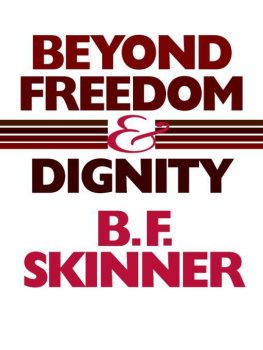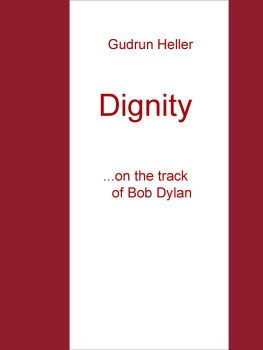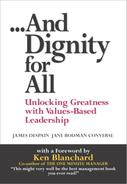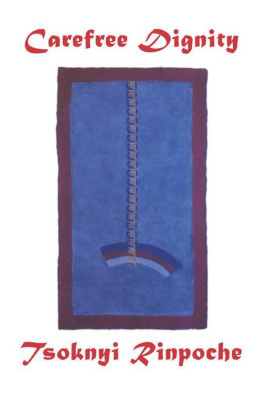Leading with Dignity
Leading with Dignity
How to Create a Culture That Brings Out the Best in People
DONNA HICKS, Ph.D.

Published with assistance from the Mary Cady Tew Memorial Fund.
Copyright 2018 by Donna Hicks.
All rights reserved.
This book may not be reproduced, in whole or in part, including illustrations, in any form (beyond that copying permitted by Sections 107 and 108 of the U.S. Copyright Law and except by reviewers for the public press), without written permission from the publishers.
Yale University Press books may be purchased in quantity for educational, business, or promotional use. For information, please e-mail (U.K. office).
Set in Minion type by Integrated Publishing Solutions, Grand Rapids, Michigan.
Printed in the United States of America.
Library of Congress Control Number: 2018932954
ISBN 978-0-300-22963-9 (hardcover : alk. paper)
A catalogue record for this book is available from the British Library.
This paper meets the requirements of ANSI/NISO Z39.48-1992 (Permanence of Paper).
10 9 8 7 6 5 4 3 2 1
For all the dignity agents out there who know we can do better
Contents
Preface
I was in my office one afternoon, working on a project for an organization in Northern Ireland, when the phone rang. I picked it up, and on the other end of the line was a consultant who had been working for a major U.S. corporation for several years. For a minute, I was concerned that he had called the wrong person, but the more he talked, the more I realized he was knowledgeable about my approach to resolving conflict with dignity. At this point, my curiosity was piqued. Why was he calling me?
He explained that the company had been plagued with problems between employees and management for several years, and a senior vice president had given him the task of finding a unique and creative approach to resolving conflicts. The consultant told me that he had read online about my dignity work and was wondering whether I would be interested in meeting with him and the senior vice president to discuss longstanding conflicts in the organization. I was initially taken aback, because I had never consulted in the corporate world; for more than two decades, my career had focused on facilitating dialogues for parties in intractable international conflicts. The more I listened to the consultant, however, the more I realized that the issues that were dividing the employees and management of the company were dignity related. Could it be that the approach I had developed for my work in international conflicts around the world was applicable to the corporate environment?
Soon thereafter, I met with the consultant and the senior vice president, and we launched a five-year project with the company. I quickly discovered that conflicts in the business world share many of the same core drivers that are present in international disputes. The common denominator is the human reaction to the way people are being treated. I learned that when people experience violations to their dignity in the workplace, they feel some of the same instinctive reactions that parties in international conflicts experiencea desire for revenge against those who have violated them. People want their grievances listened to, heard, and acknowledged. When this doesnt happen, the original conflicts escalate, which only deepens the divide.
Also similar is the role that leadership plays in these conflicts. Although significant and complex forces always contribute to the breakdown of relationships, the extent to which leaders pay attention to, recognize, and understand the dignity concerns underlying peoples grievances makes an enormous difference as to whether these conflicts can be resolved.
As simple as that sounds, it is an enormous challenge, largely because most people do not have a working knowledge of dignity. I have found that most people are unaware of their own inherent value and worth, and are usually at a loss for how to recognize it in others. This ignorance causes a lot of emotional pain and anguish as well as failed relationships of all kinds. Nevertheless, everyone seems to have an instinctive feeling about dignity. We may not have words to describe it, but the truth is, it is deeply embedded within us. What we do know is that we all want to be treated in ways that show we matter, and when we are not treated this way, we suffer. An understanding of dignitywhat I call dignity consciousnesscan take us a long way toward relieving that suffering.
In my first book, Dignity: Its Essential Role in Resolving Conflict (Yale University Press, 2011), I showcased the Dignity Model to clarify what dignity is, what it looks like, and how to apply the concept to our lives and relationships. The building blocks of the model are the ten essential elements of dignity, which are ten ways to honor dignity, and the ten temptations to violate dignity, or ways in which our evolutionary legacy set us up to violate our own dignity. The model also highlights ways to resolve conflict using a dignity approach.
Since the publication of Dignity, I have consulted with a variety of organizations interested in addressing relationship problems in the workplace. Their questions and concerns have led me to understand that there is a great need for this vital information in the business community and beyond. Leading with Dignity is my answer to this need, and it is designed for leaders in any work environment: in healthcare, education, faith communities, governments, and other organizations.
My goal is to take the dignity work several steps further by showing dignity in action. This sequel, then, is meant to be a users guide for leaders who want to expand not just their understanding of dignity, but also their knowledge of how to embody, model, and make it work for the well-being of their people and organizations.
The rewards of putting dignity into practice in the workplace arent limited to what happens within the organization. There are ripple effects; we can experience them in every encounter, every day, in big and small ways. Knowledge of dignity transforms into a way of being, because the more we engage dignitys potential, the more we become empowered by it.
Acknowledgments
It has been a joy introducing the Dignity Model to people in organizations of all kinds. Ive worked in the corporate environment, healthcare, schools, and faith communities as well as with people who have suffered multiple indignities in international conflicts. The contributions that they have made to the development of my thinking about the transformative role that dignity can play in the exercise of leadership are invaluable to me. All of you dignity agents out there who have committed to practicing dignity as a way of lifethank you, thank you, thank you.
Freelance writer Sharon Hogan, who helped me with Dignity, also made a significant contribution to this manuscript. Even though she was juggling many of her own lifes challenges, she made time to help with editing and thinking through many aspects of this book. I would also like to acknowledge the pivotal role my former literary agent, Coleen Mohyde, played in preparing my original proposal for Yale University Press.
I cannot thank my editor, Jean Thomson Black, enough for her ongoing support and encouragement during the writing process. I dont know how I got so lucky to have her guide me twice through the production of my books. Thank you, Jean. I am most grateful to Julie Carlson for doing such a great job copyediting the manuscript. Also thanks to Michael Deneen and Ann-Marie Imbornoni at Yale University Press.
Next page







